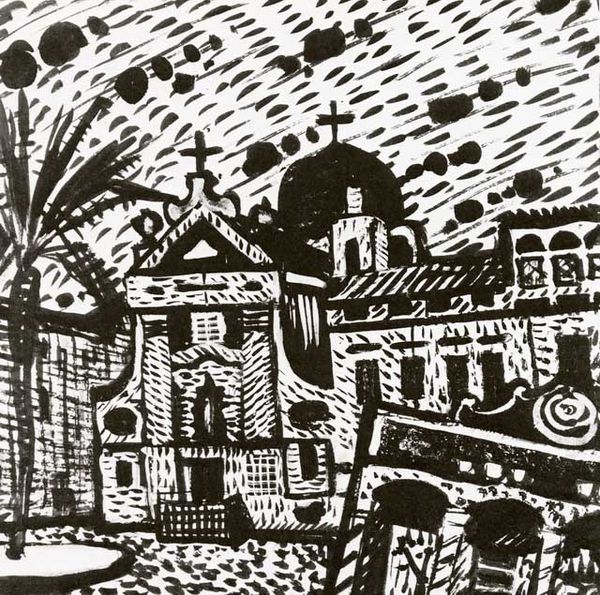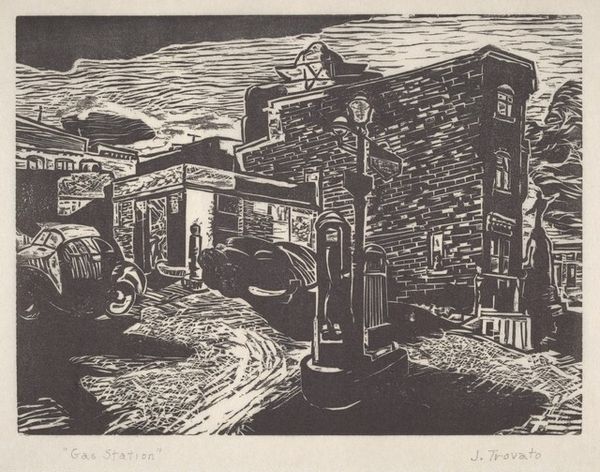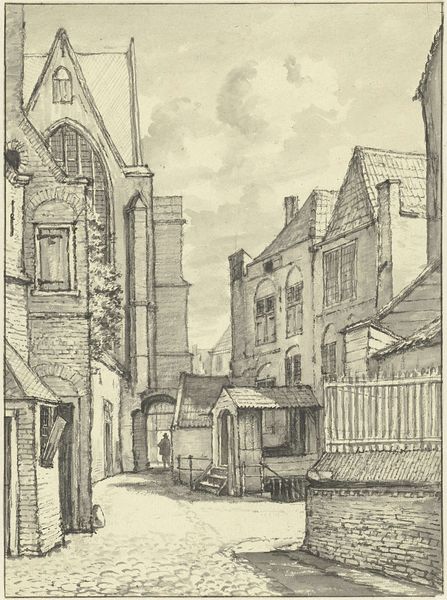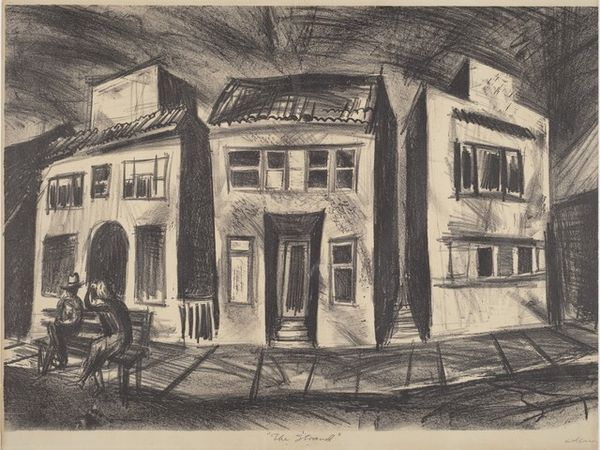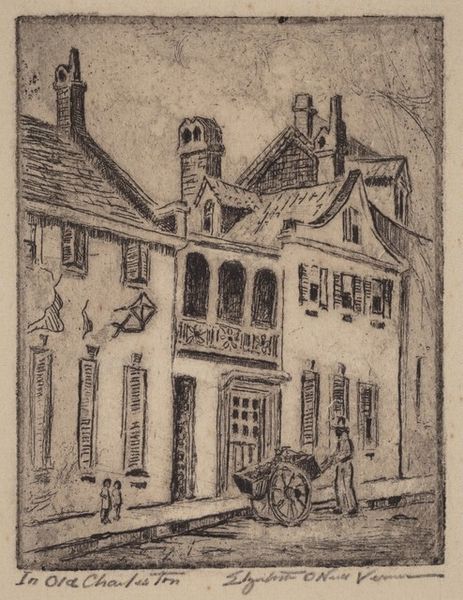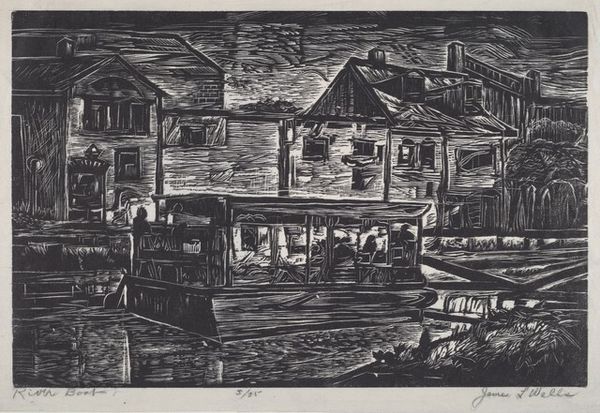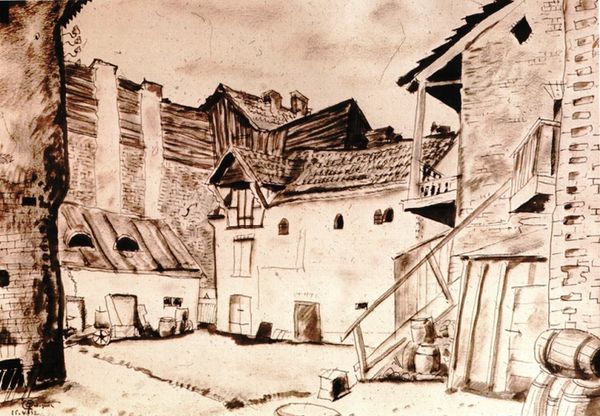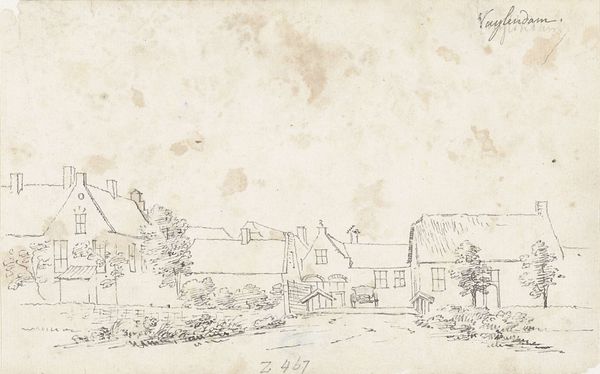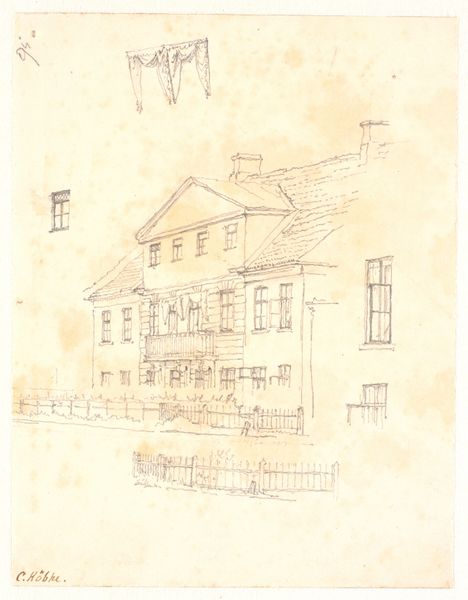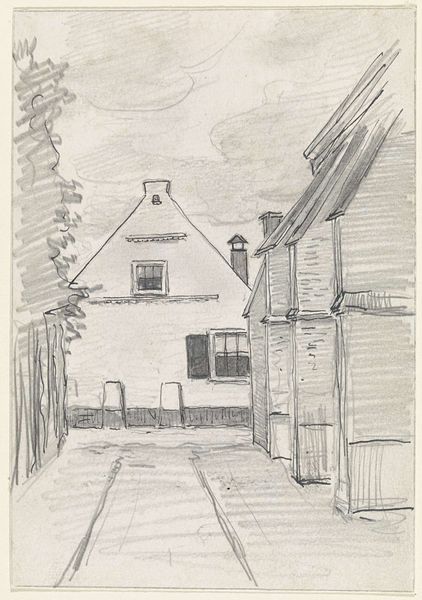
drawing, ink
#
drawing
#
impressionism
#
landscape
#
ink
#
cityscape
#
post-impressionism
Dimensions: 13.4 x 20.6 cm
Copyright: Public domain
Curator: We’re looking at “The Artist’s House in Arles,” an ink drawing made by Vincent van Gogh in 1888. Editor: My initial reaction is a sort of claustrophobia, despite the cityscape. The heavy, horizontal lines used for the sky, coupled with the dense, stippled ground, create a flattening effect, trapping the architecture. Curator: It’s interesting you say that. Focusing on the formal elements, I'm struck by the interplay between line and texture. The regularity of the hatched sky contrasts dramatically with the almost frenzied dots covering the ground, leading the eye to explore the scene. The structure is well-balanced with orthogonal lines that add symmetry, as well as strong perspective to define the city-scape. Editor: That perspective also seems forced somehow. Consider the social context of van Gogh's time in Arles. He yearned to create a community for artists, “The Yellow House" became the center of intense, ultimately failed collaboration with Gauguin. Doesn't the tension in this rendering, its stifled atmosphere, reflect his struggle for acceptance and belonging? Look at how isolated the figures are, scattered on the landscape and on the streets. Curator: Perhaps, but I see the figures as elements that add a point of focus. I am fascinated by the variety of strokes used. The carefully placed vertical lines building up the buildings themselves stand out against the loose gestural work, animating this urban space. Editor: But urban space it certainly is. How do we see the increasing industrialisation and urban development through this single image? Look at the bridge barely suggested in the distance. How are the marks we are describing hinting to more extensive contexts and societal anxieties of the 19th Century? Curator: Van Gogh masterfully manipulated the contrast between dark ink and negative space to suggest form and light. Through varied densities and arrangements, there’s an intrinsic quality about the artist, which invites us to look into these details. Editor: I can definitely see those points and that is undeniable in Van Gogh’s expression of inner turmoil but beyond his personal emotions, the drawing might reflect universal feelings of alienation amidst rapid societal changes. A glimpse into the past, but it feels deeply present today.
Comments
No comments
Be the first to comment and join the conversation on the ultimate creative platform.
